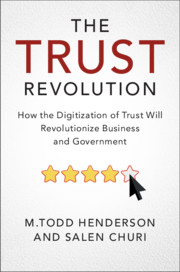8 - Providing Trust in the Ridesharing Market
from Part II
Published online by Cambridge University Press: 12 July 2019
Summary
Regulation in all its various forms has been used over the past century and more to create the trust necessary to enable strangers to share rides. As we explore in this chapter, the initial regulation of the ridesharing market was provided by government, which limited entry, set rates, and prescribed service standards. But, as the history we briefly survey in this chapter suggests, this approach, while beneficial, was not sacred. It was, given the resources and information available at the time, the best approach possible. That is no longer true, which gives us deep insights into the very nature of regulation and government power. The regulation of taxi cabs is another example of the interaction between private and public provisions of trust. Government regulation of some activities has been viewed as the only solution possible, imperfect as it is, for certain problems. Taxi regulation fits this description. As we will see through an examination of its rise and perseverance, despite well-known and well-documented problems, the government-enforced taxi cartel lasted for nearly 100 years. But the rise of ridesharing platforms, such as Uber, calls all this into doubt.
- Type
- Chapter
- Information
- The Trust RevolutionHow the Digitization of Trust Will Revolutionize Business and Government, pp. 139 - 148Publisher: Cambridge University PressPrint publication year: 2019



